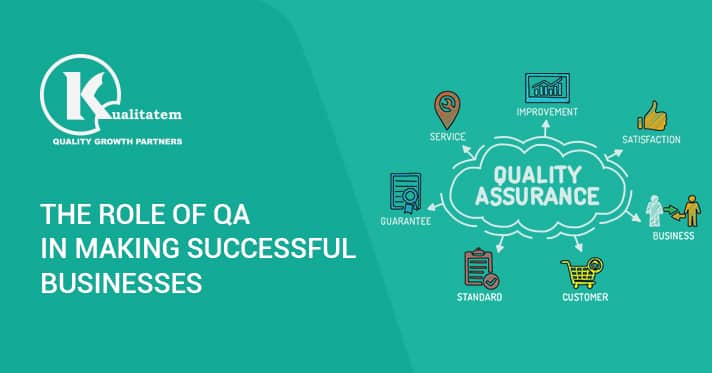The Role of QA in Making Successful Businesses

- February 13, 2020
- HibaSulaiman
Agile is the methodology that is now mostly used in the software testing life cycle. Unlike Waterfall, Agile consists of sprints, each lasting for about two weeks and containing a specific list of tasks to be done. QA needs to be an integral part of each of the sprints because only by doing so can make your development successful and hence help your business grow faster. In this article, we’ll be focusing on why companies should invest in a software testing company and what’s in it for them. Let’s start by learning what the QA engineers do.
Role of QA engineers
- Clarification and analysis of the requirements with the business analysts or the customers
- Planning the testing process
- Writing test cases
- Functional testing
- Identifying the problem areas
- Discussing fixes with developers
- Tracking the lifecycle of errors
- Re-testing fixed defects
- Testing analysis
- Optimizing the testing process
- Analyzing teamwork processes
- Improving the process
- Maintaining test documentation
But what’s the responsibility of the QA/software testing company as a whole? Why does testing need to be a part of development? Let’s find that out too.
Prerequisites for the software
You need to be prepared for what you’re up against and for that, you need to know what you’re up against. Yes, without knowing what exactly you’re developing and testing, you can miss out on potential risks and problems that can lead to expensive and serious errors.
The quality of the product
The evaluation of development attributes, forecasting, and assessing risks are the essentials for gauging how good and reliable the product is.
Features of the QA team
The QA team lead has a significant role in managing the testing process, ensuring that the QA team’s capabilities match the demand of the projects, and planning tests to meet specified production timings.
The qualification of the team
Ensuring the quality of the product starts with ensuring the quality of the team and the QA process itself. You need to know exactly where your weaknesses lie and what slows you down to make steps towards improving the traits of the work and continually optimize it.
Feedback and product satisfaction
It’s essential to gauge the overall degree of satisfaction using appropriate metrics to identify possible problems in time and quickly apply feedback to improve processes.
How does QA help save money?
Wait, doesn’t investing in a software testing company incurs cost? It’s time to change your perspective. Let’s look at it this way:
- Security compliance: If you’re building a banking app or an app that involves money transfer, your QA team will make efforts to ensure that the transfer will be addressed to the right account.
- Early debugging: It’s significantly cheaper to fix bugs earlier in the process rather than doing that after the product is finished. Like they say, “Prevention is better than the cure”. That’s why having a QA team is a must.
- A reputation that matters: You’re putting your reputation on the line if you don’t test the application before it’s released. A buggy application will not please your users and will make them think that you didn’t care much about them.
If you want to make the product right, you have to test it right. It’s always better to expose the product flaws in the production stage than users exposing it for you after it’s released.











